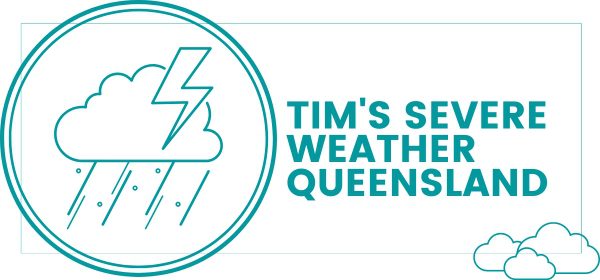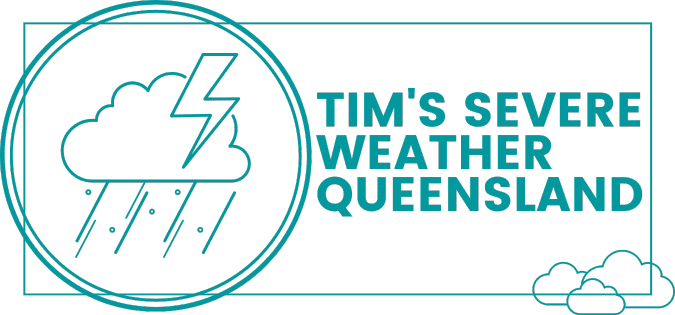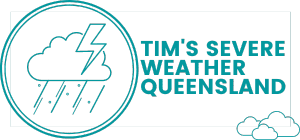Possible Cyclone & Low-Pressure System Forecast Track Maps For The Next 9 Days
See Tropical Depressions Track Map Affecting QLD
What Is a Live & Real Time Cyclone Tracking Map for Queensland?
A live and real-time cyclone tracking map for Queensland is a web-based application or service that provides up-to-date information on the location, intensity, and projected path of cyclones in the Queensland region of Australia.
These maps use data from meteorological agencies and satellite imagery to track cyclones as they develop and move across the region.
Users can access these maps to stay informed about cyclone activity, including any potential threats to their area. The maps often include features such as colour-coded tracks to indicate the severity of the cyclone, forecasted paths, and other relevant information to help individuals and communities prepare for and respond to cyclones.
10 Ways An Australian Tropical Cyclone Forecast Track Map Can Help Avoid Severe Weather Effects On Communities.
An Australian Tropical Cyclone Forecast Track Map can help communities avoid severe weather effects in several ways:
- Early Warning: The map provides early warning of approaching cyclones, allowing communities to prepare in advance.
- Evacuation Planning: It helps in planning evacuation routes and shelters for residents in the cyclone’s path.
- Risk Assessment: The map helps assess the risk level for different areas, allowing authorities to prioritize response efforts.
- Preventative Measures: Communities can take preventative measures such as securing loose objects, trimming trees, and reinforcing structures based on the forecasted track.
- Resource Allocation: It aids in allocating resources such as emergency services and supplies to areas likely to be impacted.
- Community Awareness: The map raises awareness among residents about the cyclone’s potential impact, encouraging them to take necessary precautions.
- Communication: It facilitates clear communication of the cyclone’s track and potential impacts to residents, businesses, and emergency responders.
- Infrastructure Protection: Communities can protect critical infrastructure such as power lines, communication towers, and water supply systems based on the forecasted track.
- Business Preparedness: Businesses can prepare by securing their premises, backing up data, and implementing business continuity plans based on the forecasted track.
- Post-Cyclone Recovery: The map helps in planning post-cyclone recovery efforts by identifying areas that require immediate attention and resources.
How Can I Prepare For A Tropical Cyclone Impact On Queensland
Preparing for a tropical cyclone in Queensland involves several key steps to ensure your safety and minimize damage to property. Here’s a comprehensive guide to help you prepare:
- Stay Informed: Monitor weather forecasts and updates from the Bureau of Meteorology (BOM) and local authorities. Follow their advice and instructions.
- Emergency Kit: Prepare an emergency kit that includes essential items such as non-perishable food, water, medications, torches, batteries, a portable radio, important documents, and a first aid kit.
- Secure Your Property: Trim trees and branches, secure loose outdoor items, and clear gutters to reduce the risk of damage from strong winds and heavy rain.
- Evacuation Plan: Know your evacuation routes and have a plan in place in case you need to evacuate. Discuss the plan with your family or household members.
- Insurance: Review your insurance policy to ensure it covers cyclone damage. Consider adding additional coverage if necessary.
- Protect Windows: Install shutters or metal screens on windows to protect them from flying debris. Alternatively, use plywood to cover windows.
- Secure Boats and Vehicles: If you have a boat, ensure it is moored securely. Park vehicles in a garage or away from trees and power lines.
- Stay Indoors: During the cyclone, stay indoors and away from windows. Keep listening to the radio for updates.
- After the Cyclone: Be cautious when going outside after the cyclone has passed. Watch out for fallen power lines, trees, and other hazards.
🌐Article Sources & Resources
Here are some web resources with links for more information:
- Queensland Government Disaster Management: Queensland Government Disaster Management
- Bureau of Meteorology (BOM): Bureau of Meteorology
- Queensland State Emergency Service (SES): Queensland SES
- ABC Emergency: ABC Emergency
- Get Ready Queensland: Get Ready Queensland
🌐Cyclone Tracking Map Web Resources
Here are some websites where you can find official current Tropical Cyclone Forecast Track Maps for Queensland (QLD):
- Bureau of Meteorology (BOM) – Australia: The BOM provides up-to-date information on tropical cyclones, including forecast track maps, warnings, and advice. You can find the maps on their Tropical Cyclone page: BOM Tropical Cyclone.
- Joint Typhoon Warning Center (JTWC): The JTWC provides forecasts and warnings for tropical cyclones in the Western Pacific and Indian Oceans, including the Australian region. You can find their latest information on tropical cyclones affecting QLD here: JTWC.
- Queensland Government – Disaster Management: The Queensland Government’s disaster management website provides updates and information on tropical cyclones affecting the state, including track maps and warnings. You can find more information here: QLD Disaster Management.
Please note that it’s important to rely on official sources for information on tropical cyclones to ensure you have the most accurate and up-to-date information.


